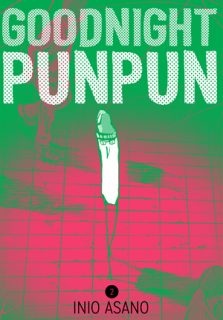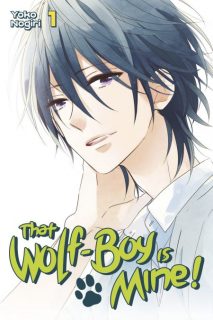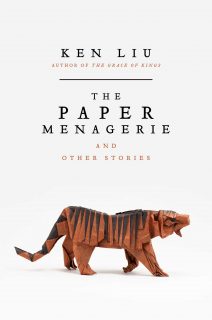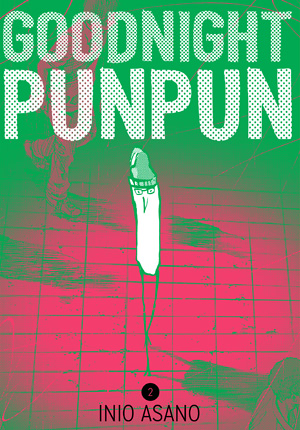My News and Reviews
Although it is now October, there is still time to participate in September’s manga giveaway. This time around everyone has a chance to win Yona of the Dawn, Volume 1, the beginning of Mizuho Kusanagi’s shoujo fantasy epic! I came across a few interesting things online last week that I’d like to share: “Strip!”: The Manga Art of Anno Moyoco” at Nippon.com (once upon a time, I hosted the Moyoco Anno Manga Moveable Feast); The Lobster Dance posted The Sparkling World of 1970s Shojo Manga, Part 8 which focuses on the influence of The Rose of Versailles on Ouran High School Host Club and Haken no Osukaru; and Anne Ishii, manga translator and one of the founders of Massive, was featured on the fifteenth episode of Hey, Cool Job. There were a couple of license announcements from Viz Media that caught my eye, too: Ryoko Fukyuama’s manga Anonymous Noise will be released by Shojo Beat, and Haikasoru will be publishing the next three novels in Yoshiki Tanaka’s Legend of the Galactic Heroes!
Quick Takes
 Goodnight Punpun, Omnibuses 2-3 (equivalent to Volumes 3-6) by Inio Asano. The first omnibus of Goodnight Punpun was tremendous and left a huge impression on me. Likewise, the second and third omnibuses are incredibly well done. Goodnight Punpun is not always an easy series to read and can actually be pretty depressing and emotionally devastating. The direction of the story can often be anticipated simply by expecting that the most awful thing will happen at any given point. There are moments of joy, but for the most part the manga is a surreal and incredibly dark coming-of-age story. The worldview is extraordinarily pessimistic and bleak; most of the characters are miserable or broken in some way, and more than a few are frankly terrible people. And yet, I continue to find Goodnight Punpun to be a remarkable and compelling work even while it’s deliberately uncomfortable and heart-breaking. I find that I can empathize and even identify with most of the characters in at least some small way, which can actually be a little terrifying. Although Punpun is the series’ lead the second omnibus of Goodnight Punpun spends a fair amount of time delving into his uncle’s unfortunate past and one of the major perspectives explored in the third omnibus is that of his mother. Artistically, Asano portray’s Punpun and his immediate family more abstractly than the other characters except for during the more sexually-charged scenes, making them even more unsettling than they already are. I’m not entirely sure where Asano is going with the series or what sort of point he will ultimately make with all of the philosophical gloom, but I am willing to find out.
Goodnight Punpun, Omnibuses 2-3 (equivalent to Volumes 3-6) by Inio Asano. The first omnibus of Goodnight Punpun was tremendous and left a huge impression on me. Likewise, the second and third omnibuses are incredibly well done. Goodnight Punpun is not always an easy series to read and can actually be pretty depressing and emotionally devastating. The direction of the story can often be anticipated simply by expecting that the most awful thing will happen at any given point. There are moments of joy, but for the most part the manga is a surreal and incredibly dark coming-of-age story. The worldview is extraordinarily pessimistic and bleak; most of the characters are miserable or broken in some way, and more than a few are frankly terrible people. And yet, I continue to find Goodnight Punpun to be a remarkable and compelling work even while it’s deliberately uncomfortable and heart-breaking. I find that I can empathize and even identify with most of the characters in at least some small way, which can actually be a little terrifying. Although Punpun is the series’ lead the second omnibus of Goodnight Punpun spends a fair amount of time delving into his uncle’s unfortunate past and one of the major perspectives explored in the third omnibus is that of his mother. Artistically, Asano portray’s Punpun and his immediate family more abstractly than the other characters except for during the more sexually-charged scenes, making them even more unsettling than they already are. I’m not entirely sure where Asano is going with the series or what sort of point he will ultimately make with all of the philosophical gloom, but I am willing to find out.
 Princess Princess Ever After by Katie O’Neill. Originally released online as a webcomic, O’Neill’s Princess Princess (not to be confused with Mikiyo Tsuda’s manga Princess Princess which is a completely different work) has now been collected in its entirety along with a new epilogue by Oni Press in a slim but beautiful hardcover edition titled Princess Princess Ever After. The comic is an absolute delight, suitable for younger readers but still enjoyable for adult audiences. After the dashing and daring Amira rescues from a tower the kind and thoughtful Sadie (with her permission first, of course), the two princesses travel together on an adventure aiding those they come across are in need of a bit of extra help. Eventually they must confront Sadie’s older sister who is the one who locked Sadie in the tower to begin with and who is an even bigger challenge than the ogre they faced while on their journey. Princess Princess Ever After is an incredibly sweet, adorable, and charming comic. Although Sadie and Amira encounter plenty of danger along the way, there really isn’t any question that they’ll get their happy ending. The comic is a lighthearted fairytale with a number of lovely twists on some of the standard tropes, most notably the romantic pairing of two princesses, neither of whom is the stereotypical damsel-in-distress, but there’s more to the story than just that. O’Neill’s artwork in Princess Princess Ever After is colorful, energetic, and cute, fitting the tone of the comic perfectly. While it’s nice to have a self-contained story, it’s almost a shame that the comic is so short and moves along so quickly; I would love to read more about Amira, Sadie, and their adventures together.
Princess Princess Ever After by Katie O’Neill. Originally released online as a webcomic, O’Neill’s Princess Princess (not to be confused with Mikiyo Tsuda’s manga Princess Princess which is a completely different work) has now been collected in its entirety along with a new epilogue by Oni Press in a slim but beautiful hardcover edition titled Princess Princess Ever After. The comic is an absolute delight, suitable for younger readers but still enjoyable for adult audiences. After the dashing and daring Amira rescues from a tower the kind and thoughtful Sadie (with her permission first, of course), the two princesses travel together on an adventure aiding those they come across are in need of a bit of extra help. Eventually they must confront Sadie’s older sister who is the one who locked Sadie in the tower to begin with and who is an even bigger challenge than the ogre they faced while on their journey. Princess Princess Ever After is an incredibly sweet, adorable, and charming comic. Although Sadie and Amira encounter plenty of danger along the way, there really isn’t any question that they’ll get their happy ending. The comic is a lighthearted fairytale with a number of lovely twists on some of the standard tropes, most notably the romantic pairing of two princesses, neither of whom is the stereotypical damsel-in-distress, but there’s more to the story than just that. O’Neill’s artwork in Princess Princess Ever After is colorful, energetic, and cute, fitting the tone of the comic perfectly. While it’s nice to have a self-contained story, it’s almost a shame that the comic is so short and moves along so quickly; I would love to read more about Amira, Sadie, and their adventures together.
 That Wolf-Boy is Mine!, Volume 1 by Yoko Nogiri. Though it’s not necessarily a new trend, ayakashi and yokai seem to be fairly prominent in many of the supernatural shoujo manga that are being licensed of late. I’m not especially bothered by this since I have a particular interest in yokai and tend to enjoy the subgenre. The presence of pretty spirit boys doesn’t hurt anything, either. But when I can easily name a half-dozen ongoing series with a similar elements (not to mention those that have already been completed), I do start to wonder what a new series has to offer that is different or unique. One of the most recent examples of a series of this type is Nogiri’s That Wolf-Boy Is Mine! from Kodansha Comics. After only one volume it hasn’t really set itself apart from other manga with ayakashi themes and it seems fairly typical for the genre, and yet it’s a very enjoyable beginning to a series. The story plays out pretty safely in the first volume and there are no real surprises, although there are hints that things might be more than they initially seem. The characters are generally likeable and endearing as well; I’m especially fond of the titular wolf-boy and his easygoing nature. While many of the characters are close to being “types,” they do have a bit more depth to them than may first appear. However, I would like to see a bit more development in the characters and their relationships as the series progresses. I do suspect that Nogiri will deliver, though. So, while I wasn’t blown away by the beginning of That Wolf-Boy Is Mine! by any means, I did like it. The manga is off to a good start and has potential. Even if Nogiri doesn’t move beyond well-worn tropes, I’m still interested in reading more of the series.
That Wolf-Boy is Mine!, Volume 1 by Yoko Nogiri. Though it’s not necessarily a new trend, ayakashi and yokai seem to be fairly prominent in many of the supernatural shoujo manga that are being licensed of late. I’m not especially bothered by this since I have a particular interest in yokai and tend to enjoy the subgenre. The presence of pretty spirit boys doesn’t hurt anything, either. But when I can easily name a half-dozen ongoing series with a similar elements (not to mention those that have already been completed), I do start to wonder what a new series has to offer that is different or unique. One of the most recent examples of a series of this type is Nogiri’s That Wolf-Boy Is Mine! from Kodansha Comics. After only one volume it hasn’t really set itself apart from other manga with ayakashi themes and it seems fairly typical for the genre, and yet it’s a very enjoyable beginning to a series. The story plays out pretty safely in the first volume and there are no real surprises, although there are hints that things might be more than they initially seem. The characters are generally likeable and endearing as well; I’m especially fond of the titular wolf-boy and his easygoing nature. While many of the characters are close to being “types,” they do have a bit more depth to them than may first appear. However, I would like to see a bit more development in the characters and their relationships as the series progresses. I do suspect that Nogiri will deliver, though. So, while I wasn’t blown away by the beginning of That Wolf-Boy Is Mine! by any means, I did like it. The manga is off to a good start and has potential. Even if Nogiri doesn’t move beyond well-worn tropes, I’m still interested in reading more of the series.
 The Paper Menagerie and Other Stories by Ken Liu. My introduction to the work of Liu was through his short story “Mono no Aware” which was collected in the anthology The Future Is Japanese. That story was enough to convince me to seek out more of his work. This turned out to be a wise decision as his debut novel The Grace of Kings was one of my favorite books from 2015. However, at least for the moment, Liu is probably best known and recognized for his shorter works which frequently earn him awards and accolades. Although The Paper Menagerie and Other Stories is Liu’s second book to be published, it is his first compilation of short stories and novellas to be released. It’s an exceptional and well-thought out collection, bringing many of Liu’s award-winning stories together with some of his personal favorites. Normally when it comes anthologies of short stories I find that their quality and strength can significantly vary from one to the next. However, all fifteen examples of Liu’s work in The Paper Menagerie and Other Stories (which includes “Mono no Aware”) are excellent. Some are certainly more powerful pieces than others, but they are all engaging, meaningful, and thought-provoking. One of the things that particularly impressed me about The Paper Menagerie and Other Stories is Liu’s ability to work in a variety of styles and genres. As a whole the collection tends to be fairly serious in tone and can be broadly described as speculative fiction, and Liu frequently incorporates aspects of Chinese and Asian culture and history, but there is still tremendous range among the individual stories. Even the stories which share common elements or themes are ultimately different from one another, offer fresh perspectives, and are each remarkable in their own way.
The Paper Menagerie and Other Stories by Ken Liu. My introduction to the work of Liu was through his short story “Mono no Aware” which was collected in the anthology The Future Is Japanese. That story was enough to convince me to seek out more of his work. This turned out to be a wise decision as his debut novel The Grace of Kings was one of my favorite books from 2015. However, at least for the moment, Liu is probably best known and recognized for his shorter works which frequently earn him awards and accolades. Although The Paper Menagerie and Other Stories is Liu’s second book to be published, it is his first compilation of short stories and novellas to be released. It’s an exceptional and well-thought out collection, bringing many of Liu’s award-winning stories together with some of his personal favorites. Normally when it comes anthologies of short stories I find that their quality and strength can significantly vary from one to the next. However, all fifteen examples of Liu’s work in The Paper Menagerie and Other Stories (which includes “Mono no Aware”) are excellent. Some are certainly more powerful pieces than others, but they are all engaging, meaningful, and thought-provoking. One of the things that particularly impressed me about The Paper Menagerie and Other Stories is Liu’s ability to work in a variety of styles and genres. As a whole the collection tends to be fairly serious in tone and can be broadly described as speculative fiction, and Liu frequently incorporates aspects of Chinese and Asian culture and history, but there is still tremendous range among the individual stories. Even the stories which share common elements or themes are ultimately different from one another, offer fresh perspectives, and are each remarkable in their own way.

Hooray, more LoGH! I h ave the first two volumes kind of off to the side (I did read the prologue in vol 1, the history of the world thing, a lot of which I learned in that one anime episode that’s in season 3 I think), but I’m going to be buying as many as I can anyway because I will one day want all of it and I would like all things LoGH I can get my hands on anyway. When I read them is all on me, but I need to make sure to at least buy them to support how awesome I think they are for publishing it (and knowing I’m definitely getting up to v6? Sweet!)
Still waiting on the anime, but I did get to ask Sentai about it at Otakon, and they said yes, they are working on, but given the fanbase (which I must admit can be a bit rabid), they want to make sure it’s perfect from the get go. Also, they got the 110 episode main series, the 24 ep Gaiden, the 28 episode other Gaiden, and the three movies, so they’ll have a lot to do.
I also read That Wolf-Boy is Mine, I agree that it’s going down a well worn path, but it’s doing it enjoyably and 4 volumes means it won’t overstay its welcome, so I look forward to more.
Speaking of Yona, I got my vol 2 yesterday and read it right away. I liked it a lot more than vol 1 as vol 1 was mostly world establishing and this one went a bit further, and that always makes me happy. I shall eagerly await vol 3! I also like her NG Life (I like how her website still uses it), so I already knew I wanted this just based on the author.
Even though I’ve only managed to read the first novel so far, I’m very excited that more of LoGH will be translated, too! Also, thank you for sharing the information regarding the release of the anime. I’d been wondering about that since Sentai’s been pretty quiet about it since the initial announcement. I don’t think I realized (or maybe just forgot) that the Gaiden and movies had been licensed in addition to the main series. Sentai definitely has its work cut out for it!
I didn’t actually know that That Wolf-Boy Is Mine is only four volumes. Judging from the first volume alone, that seems to be a good length for it–long enough to tell a decent story but not so long that it will get tedious. I can’t wait to get my hands on the next volume of Yona of the Dawn! You’re not the only person I’ve heard say they enjoy it more than the first. I’ve not read NG Life, but I may need to check it out. :)
NG Life isn’t currently too difficult to find for cheap on eBay, it was one of the last series Tokyopop finished publishing (I distinctly remember, the day I came back from Borders, I found out TP was closing its doors in the US, also, Borders existed at that time). It’s only 9 volumes, so it’s not too long a read, but long enough to still enjoy all the characters (the more characters she added in that series, somehow it got better). I also read her Sweet Rein series, it was cute, mostly just a distraction though. And Mugen Spiral was clearly an idea for a full series cut off, not really worth tracking down imo. TP seemed to like it a lot more (everyone volume of NG Life proudly said “From the creator of Mugen Spiral!” all over the front)
I really do think I should pick up NG Life when I get a chance. I just read the premise of the series, and I’m fairly certain that I’d enjoy the manga. And you’re right, it does still seem to be fairly easy to find, unlike some of the other late Tokyopop titles. Mugen Spiral sounds interesting, too; it’s too bad that the ending was rushed.
I finish Pun Pun in one night. It was cool, but I don’t think it’s that nice. The art is good as expected, but the story line, the clique, the development, all not too interesting.
While I certainly don’t think I would describe Goodnight Punpun as nice, I do think it’s done well. It’s a rough read, but I find that it personally resonates with me. That being said, I can completely understand how it wouldn’t work for other people! And occasionally I do wonder if Goodnight Punpun is just misery for misery’s sake; I’ll need to read more of the series. But if nothing else, the artwork is good!